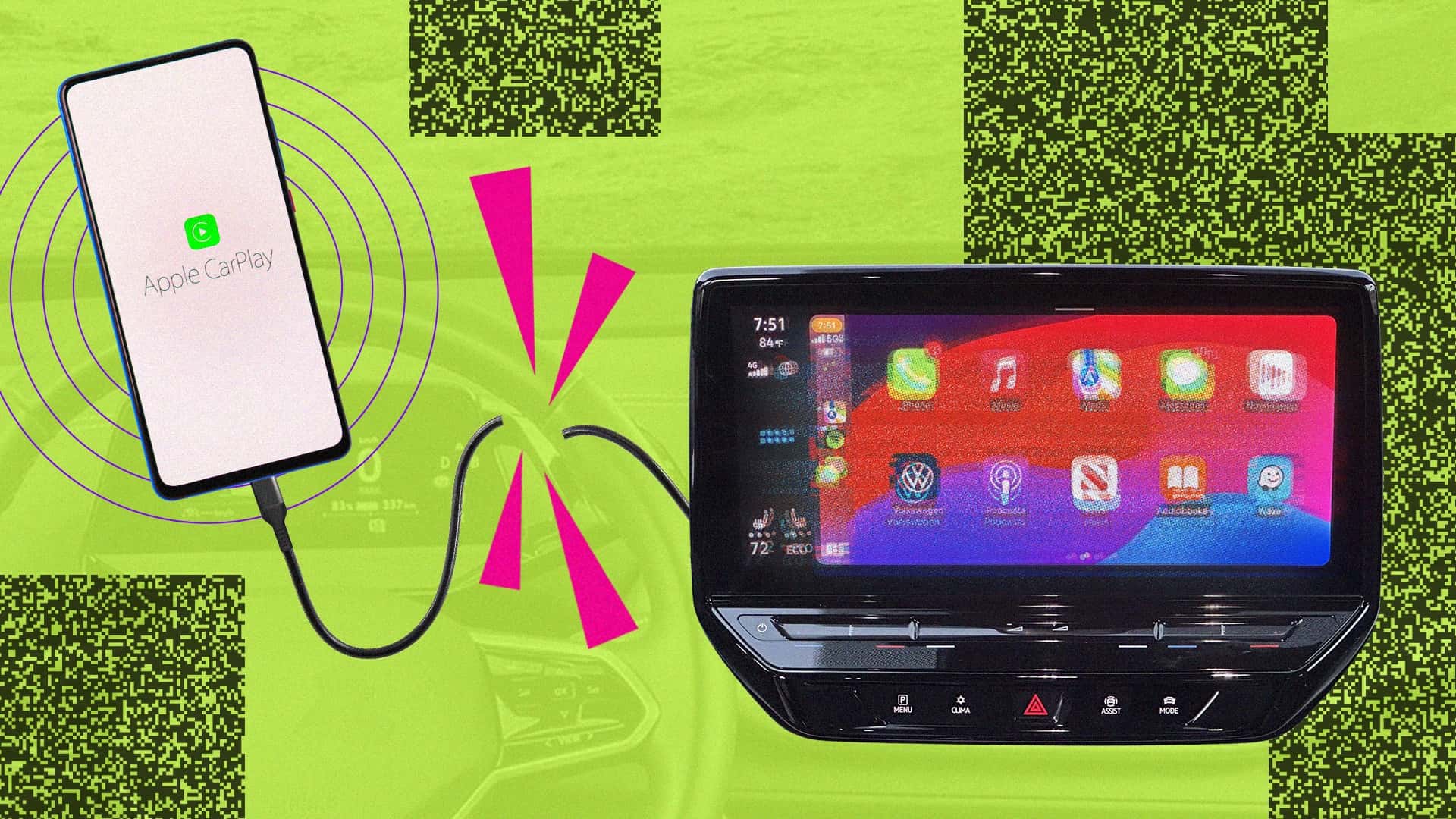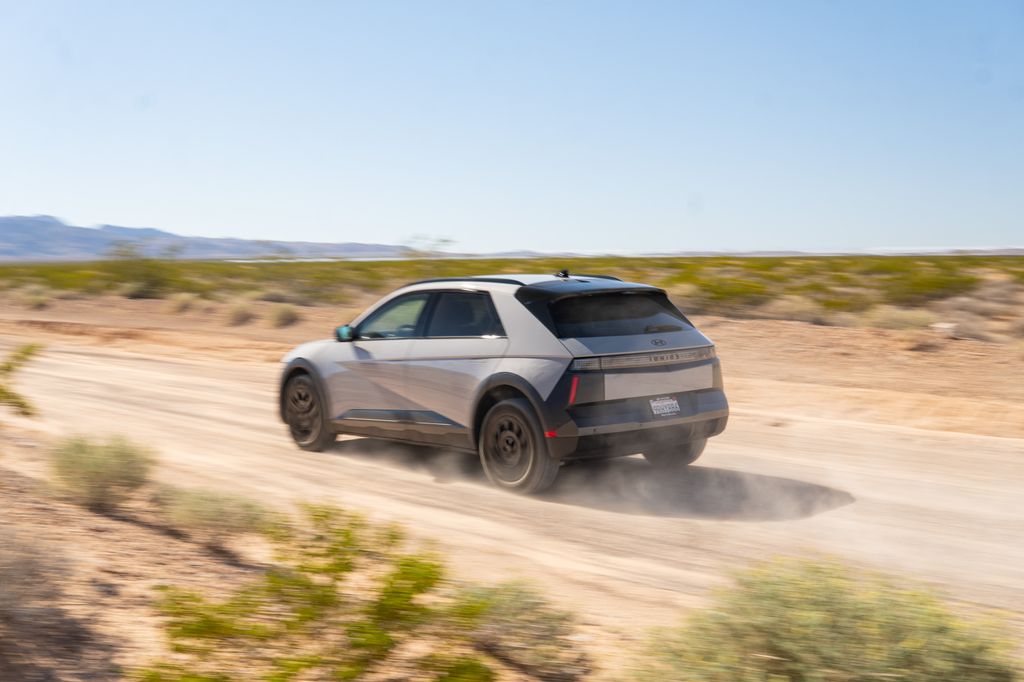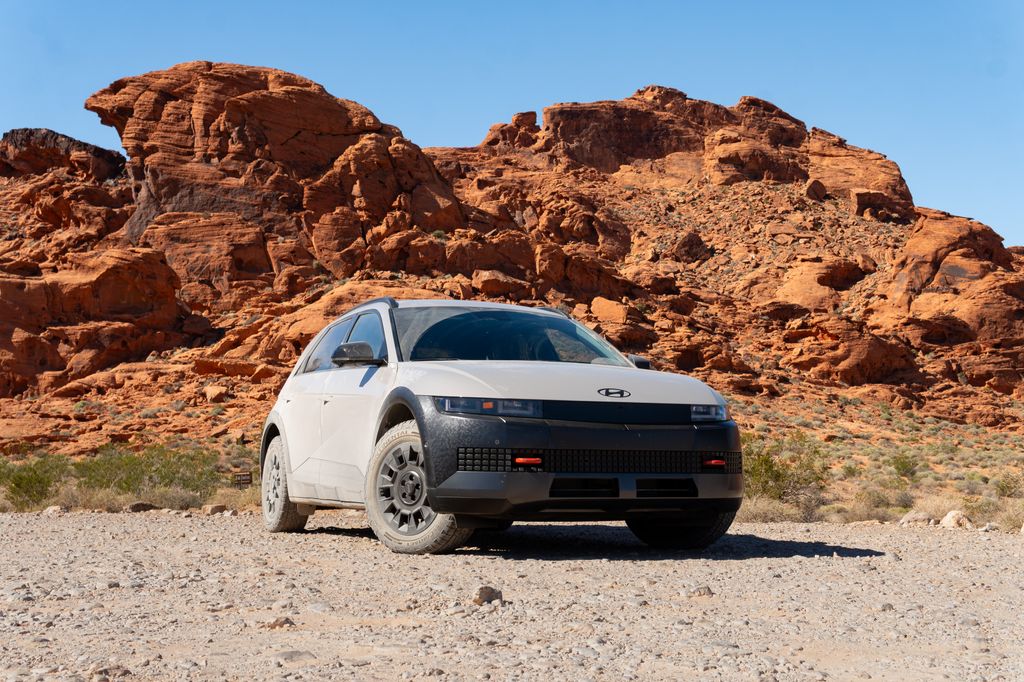
Car tech is frustrating right now. Chances are if you hop in a new vehicle, you're going to be greeted by a confounding array of touch screens, capacitive buttons and submenus. Some of it is amazing, and some of it is confusing. It is easy—natural, even—to opt out. To skip all the nonsense, plug in your phone, and channel everything through Apple CarPlay or Android Auto. But if car companies actually want to give buyers a good experience, I'm more convinced than ever that this is the wrong move.
A recent road trip in a Hyundai Ioniq 5 with CarPlay proved it to me.
Necessity is the mother of invention. Until car companies stop using CarPlay as a crutch, they are never going to fix their crappy software.
Software Is Not Optional
It'd be great if cars were simple, mechanical devices built out of raw iron and bolts and sold to purist customers who did their own maintenance. Golly-gee, it sure would be swell if we were all still taking the street car to see the picture show for a nickel too.
But the world we live in isn't stagnant. It's messy, and always in motion, and defined by the whims of a car-buying population that expects traffic-aware maps, seamless phone connectivity, limitless customization and a steady stream of over-the-air-updates. Software is a necessary part of that experience.

Car enthusiasts argue that software is the worst part of driving a modern car, and they're largely right. But that's not a software problem. That's a car company problem. These brands are used to making mechanical devices where software is an enabler, an afterthought. Whether they like it or not, though, that era is d-e-a-d.
I'll prove it.
Last week, I had to be in Las Vegas for work. I decided to drive there in a 2025 Hyundai Ioniq 5 XRT, and right off the bat I had a problem. I knew from experience and other InsideEVs editors that Hyundai's built-in route planner was a joke. So I used A Better Route Planner (ABRP), the gold standard for EV road trip planning.

By this point, Hyundai has already lost most customers. How many normal people do you know that are going to use a dedicated route-planning app for road trips? How many are going to configure everything with their expected efficiency and correct model to make it work? How many are going to pay for the premium version of ABRP so it works in CarPlay?
I don't, so I set my destination as ABRP's first suggested charger and struck out into the desert. But because the XRT is a new trim, ABRP had overestimated how efficient it was. And because I was relying on an external app for planning, I had to monitor myself whether I had enough juice to get there, and modify my charge times and highway speeds to get there. It was stressful, but it worked.

On the way back, I decided to give Hyundai's route planner a try. It mapped out a route that relied on a single-port 50-kilowatt CalTrans charger, at a rest stop that has been closed since July. Even if it was open, it's absurd to direct car that can pull 250 kW to a 50-kW charger. It's equally absurd to direct me to a one-stall charger 25 miles from the nearest alternative, especially when it's an ancient one run by a state government.
This is how crucial software is to the modern car experience. Whether I ended up stranded in the Mojave desert or happily chugging along in silence depended not on drivetrain reliability, or interior quality. It all hinged on whether the software tool I used to plan my route was smart enough to recognize when stations were closed, or a bad idea.
This entire experience happens in the real world, but is software-defined. Software coordinates every sensor and component in the car, provides us with drive modes and ambient lighting options, steers the car on the freeway and streams the music.
To do any of this well requires a cutting-edge software team with a role in the design processes of every major component. So why would you not want to design the part of the software that the consumer actually touches every day? Why would you want to outsource it to Apple or Google, which in turn provide an identical experience in every one of your competitors' cars?
The Software And The Car Have To Work Together
The last time I had driven through Vegas, I was in my 2024 Chevy Blazer EV. That car has been panned by critics and commenters for being the beginning of General Motors' anti-CarPlay push. The automaker famously opted not to include CarPlay in its future vehicles, following upstarts like Tesla and Rivian.
Because the core concept of the software experience is not based around phone projection—because GM had to get this right on its own—it built a route planner that actually works.
It's just Google Maps, but it uses up-to-the-minute data from the car to plot out routes and suggest charging stops. And in my experience, it's faster, more accurate and more conservative than many other systems. I'd argue that's because it has to be. GM wants you to be able to drive anywhere in the country without needing to double-check things with your phone, and I believe them.
This is just one example of where integration is important. But whether you're trying to design an auto-parking system, a contextual voice-control system or just a music streaming option, it is better when the car and the software are fully intertwined. Tesla recognizes this, which is why it is the only high-volume manufacturer in the U.S. with a truly intuitive and blazingly fast system.

Rivian knows this, which is why it rolls out new software features and updates far faster than iOS's once-yearly CarPlay tune-up. These companies have to treat software as primary to the experience. And once you actually configure your organization to accept that, it opens up far more possibilities.
It's why Teslas have "sentry mode" and "dog mode," why Rivians have native Apple Music support and why both support streaming video during charging stops. These are software-centric companies, so when they want to enable new functionality, they actually have the institutionally knowledge to do it.

Companies like Mercedes, Ford, Hyundai and countless others are trying to build up that institutional knowledge for tomorrow while offering CarPlay today. Based on customer and critical opinions, this seems to be the popular and profitable play. It is certainly the safest.
But this, to me, is not the time for careful toddling. Western legacy automakers are consistently bleeding customers all of the world to brands like Tesla and BYD, which recognize that software isn't just part of a car's experience—it is the experience. And if they're not using your software, they're not really your customer.
Contact the author: Mack.Hogan@insideevs.com







